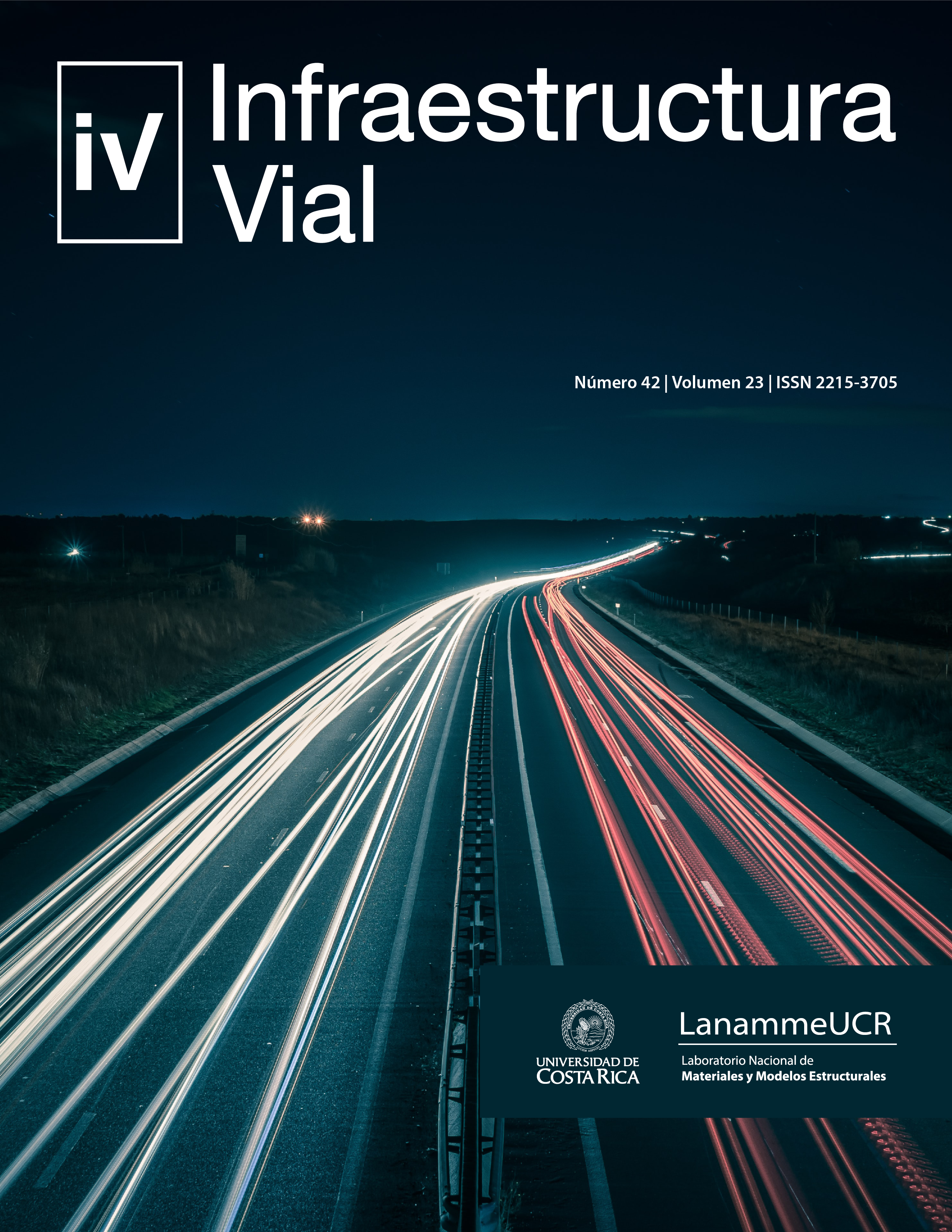Abstract
The modification of asphalt mix with waste polymers provides several benefits. Among the most important is the optimization of the performance of the mix and the increase in its useful life. Not to mention a reduction in the amount of plastic waste that does not have an adequate waste management.
This article shows the results obtained from a study where a blister type waste material (composed of polymers such as PVC) was incorporated into an asphalt mixture by the dry method. Method in which, prior to the asphalt adhesion, the modifier is incorporated to the mix in substitution of part of the fine aggregate. The purpose of the study was to evaluate the performance of the mix and compare its mechanical behavior with a conventional mix.
For the project development, the modifier was characterized, and the appropriate percentage was selected so that the design of the modified mixture would comply with Superpave requirements. With the optimized design, the test specimens were prepared, and their performance was evaluated based on the following tests: four-point beam bending, Hamburg wheel, retained tensile strength (moisture damage) and dynamic modulus. Since an adequate behavior of the modified mix was observed, its sensitivity was evaluated in a pavement structure; identifying in which layers of the asphalt mix should the material be used.
References
AASHTO. (2017). AASHTO T 321-17: Standard Method of Test for Determining the Fatigue Life of Compacted Asphalt Mixtures Subjected to Repeated Flexural Bending. United States.
Aguiar, J., Villegas, R., Loría, L., y Salazar, J. (2013). Use of waste products as bitumen modifiers in Costa Rica. EATA Conference. Recuperado de: https://www.lanamme.ucr.ac.cr/repositorio/handle/50625112500/535
Asamblea Legislativa, República de Costa Rica. (2020). Ley N° 9828. Ley (Uso de materiales reutilizables en pavimentos y obras de infraestructura vial). Versión de la norma 1 de 1, 21 mayo 2020. Gaceta No. 148 publicada el 21 junio 2020. Recuperado de: http://www.pgrweb.go.cr/scij/Busqueda/Normativa/Normas/nrm_texto_completo.aspx?param1=NRTC&nValor1=1&nValor2=91662&nValor3=121125&strTipM=TC
Ávila, J. (2020). Diseño de un proceso de recuperación de aluminio por fusión de los empaques tipo blíster. (Tesis de grado). Escuela Politécnica Nacional, Quito, Ecuador.
Cajina, N. (2020). Diseño y evaluación de desempeño de la mezcla asfáltica modificada con material de desecho. (Tesis de grado). Universidad de Costa Rica, San José, Costa Rica.
Camacho, C. (17 de febrero 2013). PVC, un plástico incómodo de reciclar. El Financiero CR. Recuperado de https://www.elfinancierocr.com/negocios/pvc-un-plastico-incomodo-de- reciclar/EYFG46ASWFDQ3KPHCYHECEYBZU/story/
Caro, S. y Álvarez, A. (2011). Evaluación de la susceptibilidad al daño por humedad de mezclas asfálticas empleando propiedades termodinámicas. Revista Facultad de Ingeniería Universidad de Antioquia, 58, 95-104.
Carranza, R., Duffo, G. y Farina, S. (2010). Nada es para siempre. Química de la degradación de los materiales. Recuperado de http://www.bnm.me.gov.ar/giga1/documentos/EL001847.pdf
Grajales, I. (5 de Junio del 2018). Costa Rica tira al mar 15 camiones de plástico por día. Hoy en el TEC. Recuperado de https://www.tec.ac.cr/hoyeneltec/2018/06/05/costa-rica-tira-mar-15-camiones-plastico-dia#:~:text=De%20acuerdo%20con%20el%20Programa,toneladas%20de%20pl%C3%A1stico%20por%20d%C3%ADa.&text=A%20pesar%20de%20ello%2C%20el,camiones%20de%20pl%C3%A1stico%20por%20d%C3%ADa
Lanamme (2016). Informe de Ensayo para el proyecto: Daño por humedad, fase N3 (I-1264-16).
Lanamme. (2017). Daño por humedad en mezclas asfálticas. (LM-PI-UMP-044-R4).
Mendoza, D.; Ruiz, D. y Cantillo, S. (2019). Automatización de equipo de pista para la evaluación de deformación permanente en mezclas asfálticas. (Tesis de grado). Universidad Piloto de Colombia, Bogotá, Colombia.
MOPT. (2017). Repositorio Sección 402) Diseño de mezcla asfáltica por el método superpave. Recuperado de http://repositorio.mopt.go.cr:8080/xmlui/123456789/3601
Muñoz, M. (2020). Evaluación de procedimientos de ensayo y análisis de la influencia del envejecimiento en la resistencia al agrietamiento por fatiga en mezclas asfálticas en laboratorio. (Tesis de grado). Universidad de Costa Rica, San José, Costa Rica.
Rodríguez, E. (2016). Uso de polvo de caucho de llantas en pavimentos asfálticos. Boletín técnico PITRA-LanammeUCR. 7(4), 1-7. Recuperado de https://www.lanamme.ucr.ac.cr/repositorio/handle/50625112500/316
Rondón, H., Moreno, L., Rodríguez, D. y Lee, J. (2009). Experiencias sobre el estudio de materiales alternativos para modificar asfaltos. Ingeniería, 14(2), 19-33.
Villegas, R. y Aguiar, J. (2013). Metodología integral de incorporación eficaz de modificantes en matrices asfálticas. Recuperado de https://www.lanamme.ucr.ac.cr/repositorio/handle/50625112500/542


